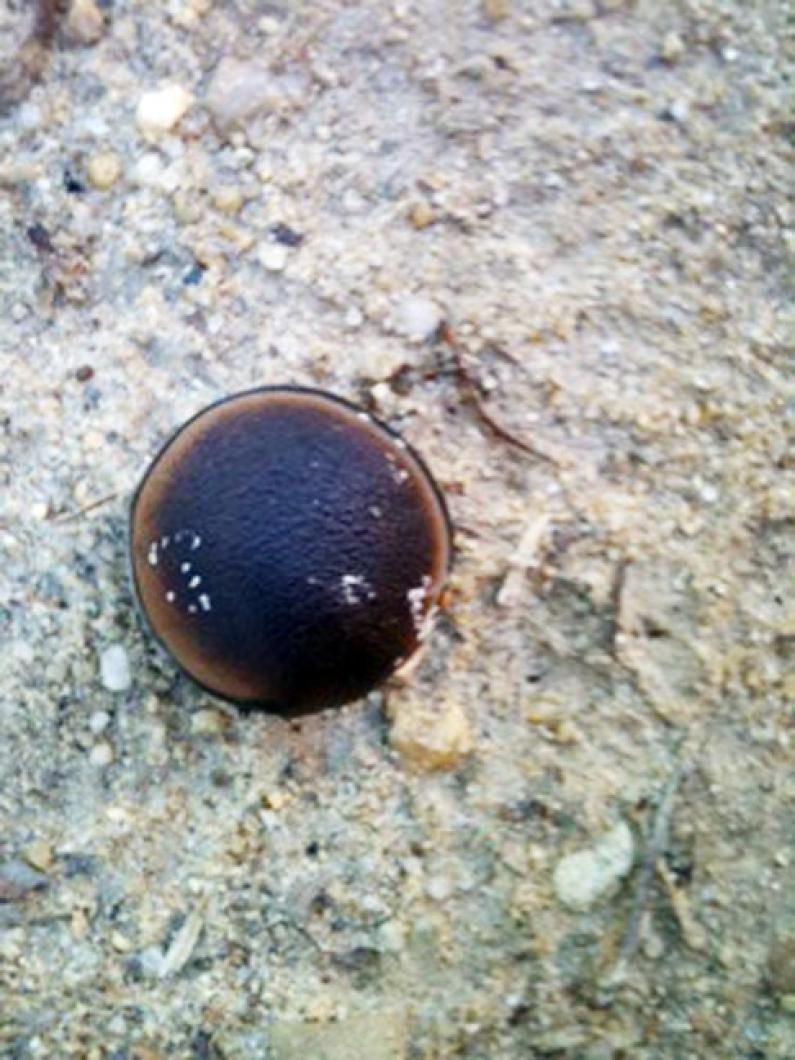"Going to the beach and ignoring the wrack line is like going to Disney World and looking only at the parking lot.” So said Ed Perry — naturalist, park ranger, writer and lover of sea beans — in Cathie Katz’ book, The Nature of Florida’s Beaches.
In Florida, finding sea beans, or drift seeds, is not exceptionally out of the ordinary for the observant beachcomber, but on Martha’s Vineyard, finding sea beans is a rare and exciting occurrence. Last week, the Russell family happened upon a sea bean at Moshup Beach.
Sea beans are tropical seeds or fruits that are carried from their natal plant (often one growing along a river or in the rain forest) into the ocean, spurred on by flooding caused by tropical storms. From the tropics, they drift with ocean currents and even hitchhike along the Gulf Stream eventually to wash ashore thousands of miles away in a wholly different habitat.
It seems like an impossible journey to make; and even more unlikely that a seed would survive long periods of time in the ocean. There were doubters of this concept of drift seeds early on.
In the Journal of the Proceedings of the Linnaean Society (Vol. 1, 1857), Charles Darwin observed: “I soon became aware that most seeds, in accordance with the common experience of gardeners, sink in water; at least I have found this to be the case, after a few days, with the 51 kinds of seeds which I have myself tried; so that such seeds could not possibly be transported by sea-currents beyond a very short distance.”
Yet survive and travel they do, though not many can. Of all of the species of seed plants on earth, only about 250 species (0.1 percent) are commonly found as drift seeds on beaches; and only about half of these are known to produce seeds that can float in seawater for more than a month and still be viable.
It is not magic, determination or miniature seed life jackets that allow them to do this; rather it is buoyancy (caused by an air pocket within the seed), hardness, impermeability and rot resistance that enable these sturdy seeds to make their voyage.
Though there are many types of sea beans, the ones found most frequently include the sea heart, Mary bean, Jamaican naval spurge, nickarnut, sea purse, blister pod, hamburger bean and the most commonly recognized one, the coconut. The Russell family found a hamburger bean or horse’s eye.
They should consider themselves lucky, since sea beans are symbols of good fortune and longevity. The Irish put them under their pillows to keep the “little people” away and to ward off evil. The Mary bean is special to pregnant women, who put them in their pocket in the hopes of having an easy labor and a healthy baby.
First, though, you have to find them. And if you do, ponder their long journey and imagine their tremendous travels. Some of the sense of magic and wonder that they once evoked has, unfortunately, become a victim of the modern age: A strange, exotic seed on a shoreline now is less likely to inspire folklore and more likely to be taken for granted, assumed to have fallen off a passing ship or deposited by a careless litterbug.
Rachel Carson might just as well have been thinking of sea beans when she said, “Always, then, in this flotsam and jetsam of the tide lines, we are reminded that a strange and different world lies offshore.” Or, in the perspective of the travelling seeds, and the words of Jerry Garcia “What a long, strange trip it’s been.”
Suzan Bellincampi is director of the Felix Neck Wildlife Sanctuary in Edgartown.





Comments (1)
Comments
Comment policy »